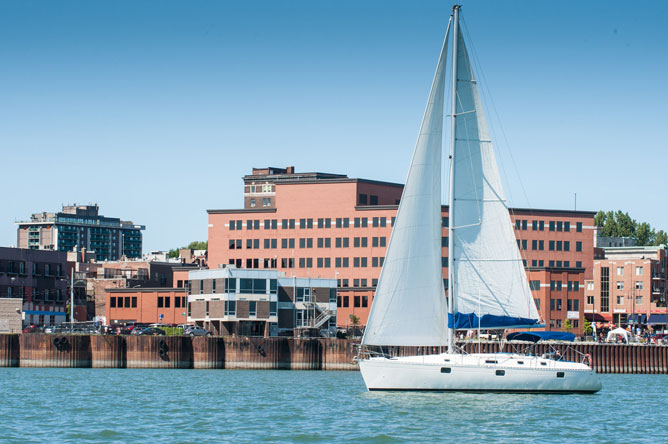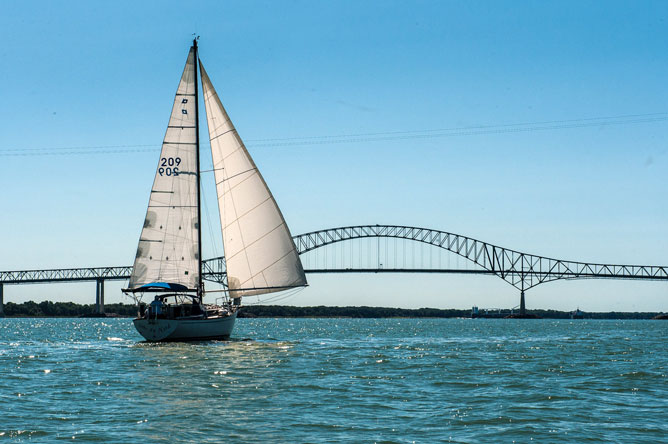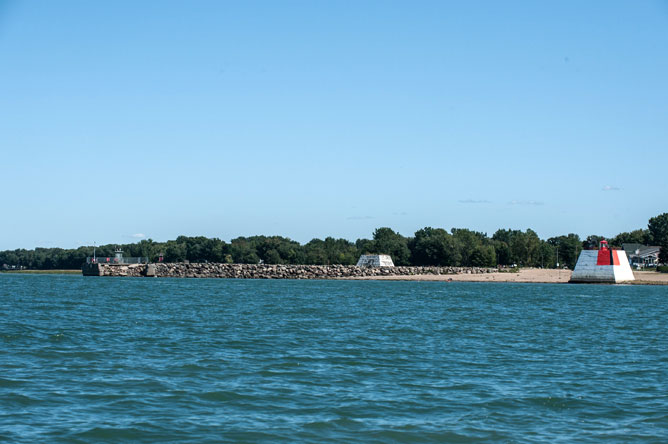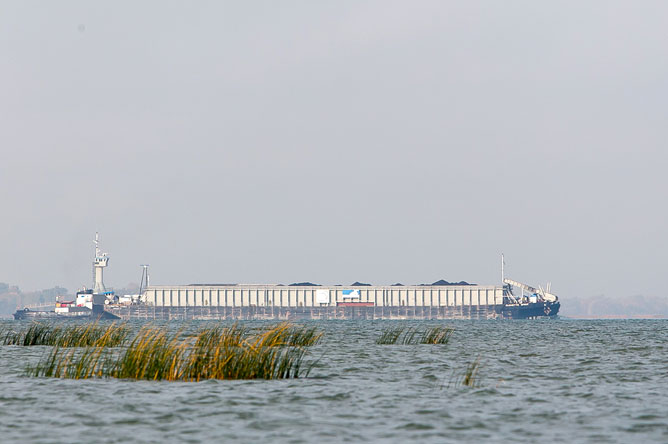Lake Saint-Pierre
Founded in 1634, Trois-Rivières is the second oldest city in Canada. Since its beginnings, it has been a bustling port city.

The wide expanse of Lake Saint-Pierre is a popular destination for a wide range of nautical activities.

The wind is generally strong enough here to fill sails, making navigation easier. The sails harmonize with the landscape, seeming almost to have been carved out of the blue sky.

This imposing lighthouse stands guard in the middle of the lake; it helps ships stay in the St. Lawrence Seaway and avoid running aground.


For many years, Port Saint-François played a major role in the commercial development of the Nicolet region. Every day, five or six ships loaded with goods and passengers would dock at the port.

When the railroads opened in 1845, they immediately came into competition with the port. Furthermore, an immense ice jam in the spring of 1865 caused water to rise six metres in Lake Saint-Pierre and severely damaged the port facilities.

Port Saint-François then became a holiday destination, attracting visitors with its beaches and charming cabins. The lighthouse, located on the western side of the wharf, has an octagonal white lantern with a red roof, atop a wide concrete pillar. It was built in 1907 and is 14.6 metres high.

The "M.S. Jacques-Cartier" offers cruises on the St. Lawrence and Lake Saint-Pierre, starting from the Port of Trois-Rivières.

In the summer months, boats of all sizes crowd the river, sometimes coming so close they seem about to collide.

Until 2000, the Department of National Defence used Lake Saint-Pierre as a firing range. Numerous shells still lie in the sediments south of the St. Lawrence Seaway, making this section of the lake unsafe for navigation. Specialists are working to remove the shells in order to prevent serious accidents that could result from an explosion.

Between Pierreville and Nicolet, the lake is only accessible via Chenal Landroche. This channel has been dredged several times to remove sediments deposited during the spring floods.

The average depth of Lake Saint-Pierre is just three metres. To permit heavy commercial vessels to pass safely, a channel has been dredged in the centre of the lake. This channel, known as the St. Lawrence Seaway, is 11.3 metres deep and 245 metres wide.
